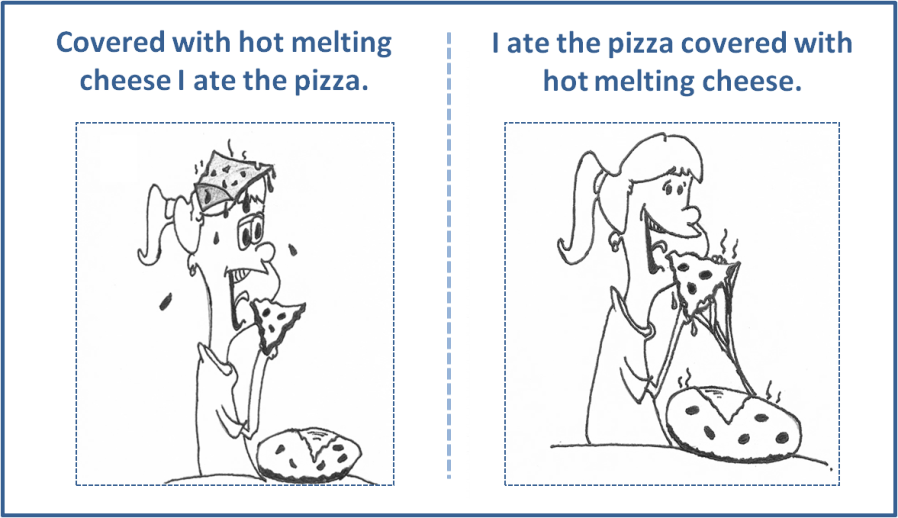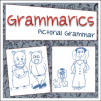
Amused by the misplaced modifiers in your students’ writing? Frustrated that your students omit commas in direct address? Tired of explaining the difference between your and you’re to your students?
Try explaining these often-confused rules of grammar, punctuation, and word usage through pictorial representations. In this article I have shown how five tricky concepts can be explained pictorially. I have tried them and they work!

How to Teach Rules Of Grammar, Punctuation, And Word Usage Using Pictorial Representations
-
1
Misplaced Modifiers
Misplaced Modifiers can cause considerable confusion to readers and can also be a great source of amusement to them. The error caused by misplaced modifier can be depicted pictorially through many humorous examples. One of them that I use is shown below.
By way of explanation, I use these points:
- Modifiers are like teenagers – they fall in love with whatever they are next to. Most misplaced modifier errors can be solved by placing the modifier next to the word or group of words that it seeks to modify.
- In the first sentence, covered with hot melting cheese (the modifier) seeks to modify pizza and not the person eating it. Placing the modifier closer to the word pizza clarifies that the pizza, and not the person eating it, is covered with hot melting cheese.
-
2
Comma In Direct Address
Not using commas in direct address is a very common error. Students and adults alike commit this mistake. Show them the picture below and they will develop an appreciation of the importance of using commas correctly in direct address.
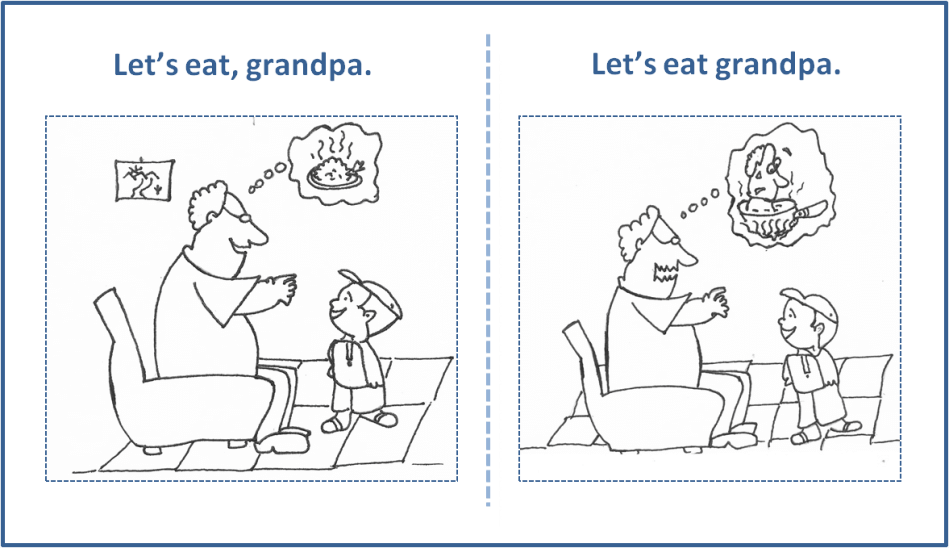
By way of explanation, I use these points:
- Placing the comma before grandpa clarifies that the boy is asking his grandpa to eat with him. Without the comma placed before grandpa, it would appear as if the boy wants to eat his grandpa.
- Commas are used to set off names (or words used in place of names) when addressing people directly in a sentence. The rules for placing commas in direct address are simple.
- If the name comes first, it is followed by a comma.
Grandpa, I want to eat a truck-load of ice.
Sam, I want to eat a truck-load of ice. - If the name comes at the end of the sentence, the comma precedes the name.
I want to eat a truck-load of ice, grandpa.
I want to eat a truck-load of ice, Sam. - If the name comes in the middle of the sentence, it is surrounded by commas.
What I said, grandpa, is that I want to eat a truck-load of ice.
What I said, Sam, is that I want to eat a truck-load of ice.
- If the name comes first, it is followed by a comma.
-
3
Your vs. You’re
I have gone through numerous lists of commonly confused words and in almost all of them your / you’re features in the top five. The error could stem in part due to an incorrect understanding of the use of apostrophes in forming contractions. The picture below should help them understand that the two words are different and should not be used interchangeably.
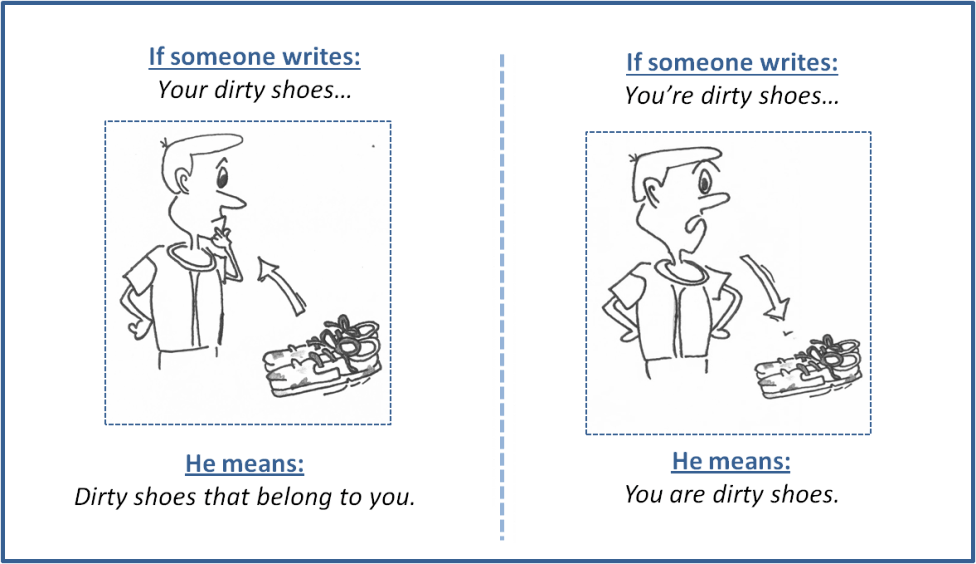
By way of explanation, I use these points:
- You’re is a contraction of you are.
- Your shows possession. It means belongs to you.
- If you are confused on whether to use your or you’re, check if you are fits into the sentence; if it does, use you’re, else use your.
-
4
The Oxford / Serial Comma
The Oxford comma is a highly-debated topic among grammarians. While some feel that it is not necessary, others argue that leaving it out can cause confusion. If you are from the latter school of thought, then you can use the below picture to explain the rationale of using the comma to your students.
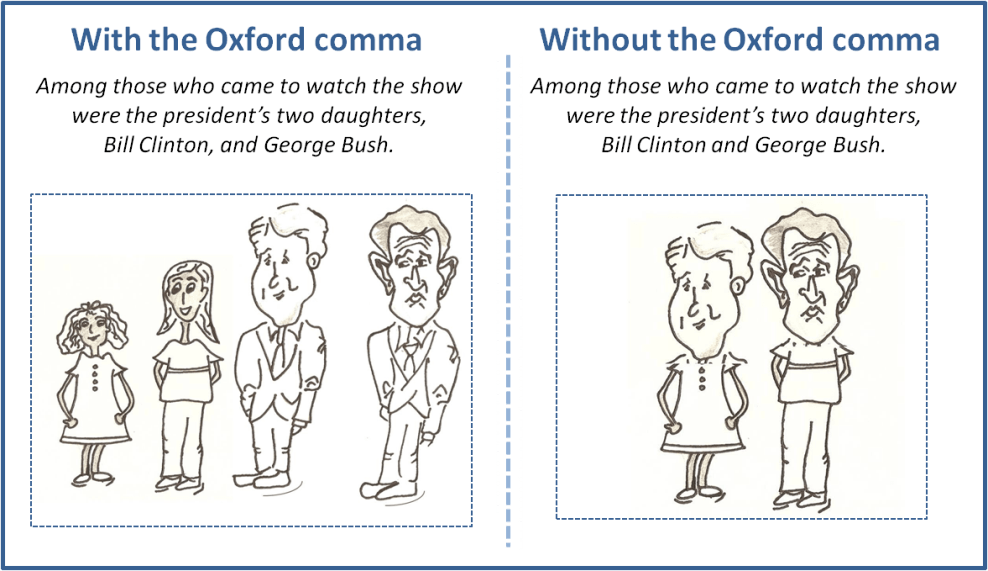
By way of explanation, I use these points:
- The Oxford comma (also known as serial comma or Harvard comma) is a comma that is used before and/or in a list containing three or more items.
- I like to eat nails, glass, and shoes.
- I hate people who do not like to eat nails, glass, or shoes.
- In some cases, the Oxford comma helps avoid ambiguity in a sentence. In the second sentence of the picture, leaving out the comma before and may lead the reader to infer that Bill Clinton and George Bush are the two daughters of the president!
- The Oxford comma (also known as serial comma or Harvard comma) is a comma that is used before and/or in a list containing three or more items.
-
5
Faulty Comparisons
Faulty comparisons occur very frequently in writing. Most people do not even realize that they are comparing two things incorrectly. The picture below shows the confusion and humor that can be caused by faulty comparisons.
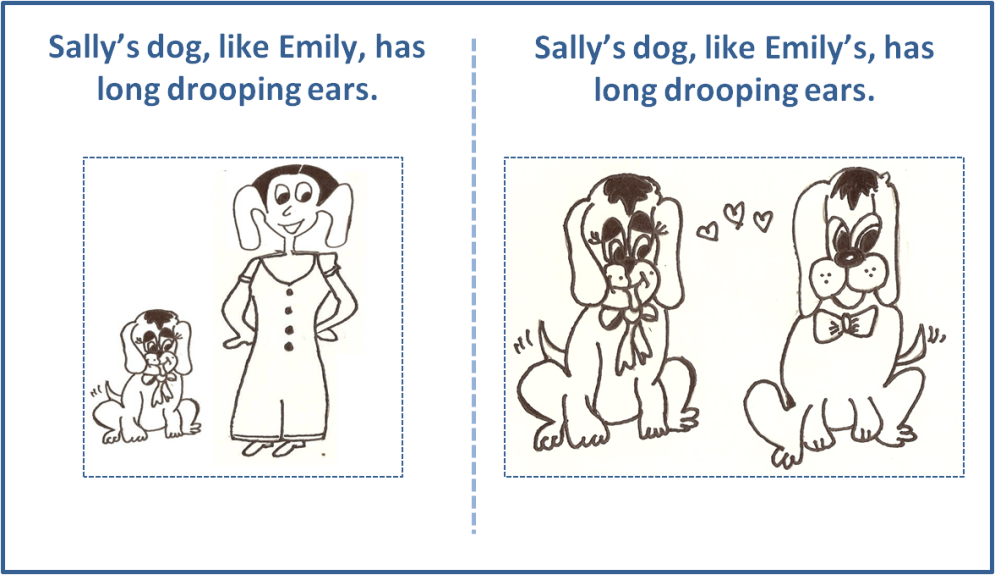
By way of explanation, I use these points:
- Faulty comparisons occur when two things are compared inappropriately or in a way that could confuse readers / listeners.
- Often, the comparison will sound as though it's acceptable, but will be missing a few necessary words.
- The shirt you are wearing looks like my brother.
Here, the shirt is being compared to the brother and not to the brother’s shirt. - The shirt you are wearing looks like my brother’s.
- The shirt you are wearing looks like my brother’s shirt.
Both of the above sentences are correct. In the first sentence, although the word shirt isn’t present, adding the ’s after brother implies that we are comparing the shirt belonging to the brother.
- The shirt you are wearing looks like my brother.
There are several benefits of using pictorial representations for teaching concepts of grammar, punctuation, and word usage.
- Students appreciate the importance of the concept, as they can clearly see the confusion or humor caused by the error.
- Pictorial representations create visual reinforcement and can be especially useful for those students who are visual learners. If not anything else, students will remember the picture associated with each grammar lesson.
- The pictures can provide an element of fun to the learning process and take some of the boredom out of the grammar class.
What do you think? Is this a useful method for teaching grammar?
Have you tried anything on these lines with your students? Please leave a comment below with your feedback.
P.S. If you enjoyed this article, please help spread it by clicking one of those sharing buttons below. And if you are interested in more, you should follow our Facebook page where we share more about creative, non-boring ways to teach English.
